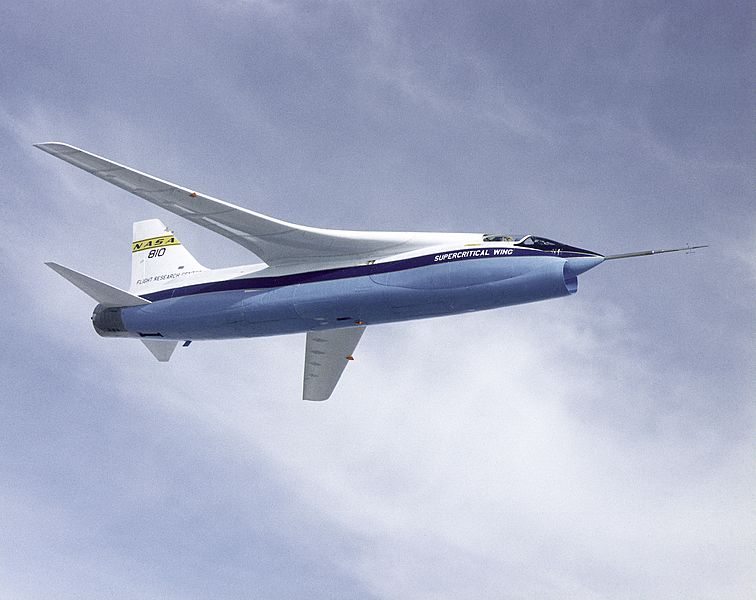Image: NASA F-8A Crusader Supercritical Wing Aircraft - GPN-2000-002001

Description: A Vought F-8A Crusader was selected by NASA as the testbed aircraft (designated TF-8A) to install an experimental Supercritical Wing in place of the conventional wing. The unique design of the Supercritical Wing (SCW) reduces the effect of shock waves on the upper surface near Mach 1, which in turn reduces drag. The F-8 Supercritical Wing (SCW) project flew from 1970 to 1973. Dryden engineer John McTigue was the first SCW program manager and Tom McMurtry was the lead project pilot. The first SCW flight took place on 9 March 1971. The last flight of the Supercritical wing was on 23 May 1973, with Ron Gerdes at the controls. Original wingspan of the F-8 was 35 feet, 2 inches while the wingspan with the supercritical wing was 43 feet, 1 inch. F-8 aircraft were powered by Pratt & Whitney J57 turbojet engines. The TF-8A Crusader was made available to the NASA Flight Research Center by the U.S. Navy. F-8 jet aircraft were built, originally, by LTV Aerospace, Dallas, Texas. Rockwell International’s North American Aircraft Division received a $1.8 million contract to fabricate the supercritical wing, which was delivered to NASA in December 1969.
Title: NASA F-8A Crusader Supercritical Wing Aircraft - GPN-2000-002001
Credit: Armstrong Photo Gallery: Home - info - pic Great Images in NASA: Home - info - pic
Author: NASA
Usage Terms: Public domain
License: Public domain
Attribution Required?: No
Image usage
The following page links to this image:

